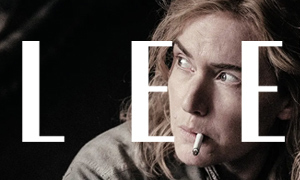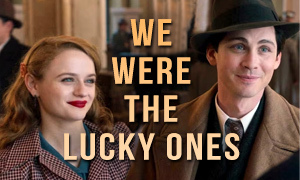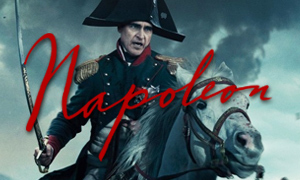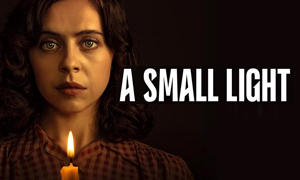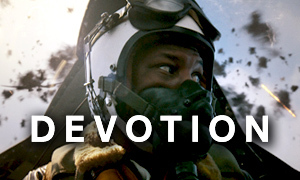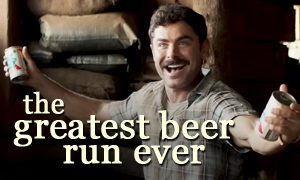The Imitation Game: History vs. Hollywood
based on the book 'Alan Turing: The Enigma' by Andrew Hodges
| REEL FACE: | REAL FACE: |
Benedict Cumberbatch
Born: July 19, 1976 Birthplace: Hammersmith, London, England, UK | Alan Turing
Born: June 23, 1912 Birthplace: Maida Vale, London, England, UK Death: June 7, 1954, Wilmslow, Cheshire, England (suicide by poison) |
Alex Lawther
Born: 1995 Birthplace: Hampshire, England, UK | Young Alan Turing
(age 16) |
Keira Knightley
Born: March 26, 1985 Birthplace: Teddington, Middlesex, England, UK | Joan Clarke
Born: June 24, 1917 Birthplace: West Norwood, London, UK Death: September 4, 1996, Headington, Oxfordshire, England, UK |
Matthew Goode
Born: April 3, 1978 Birthplace: Exeter, Devon, England, UK | Hugh Alexander
Born: April 19, 1909 Birthplace: Cork, Ireland Death: February 15, 1974, Cheltenham, Gloucestershire, England, UK |
Charles Dance
Born: October 10, 1946 Birthplace: Redditch, Worcestershire, England, UK | Commander Alastair Denniston
Born: December 1, 1881 Birthplace: Greenock, Scotland, UK Death: January 1, 1961, Milford on Sea, Hampshire, England, UK |
Mark Strong
Born: August 5, 1963 Birthplace: London, England, UK | Stewart Menzies
Born: January 30, 1890 Birthplace: London, England, UK Death: May 29, 1968, London, England, UK |
Allen Leech
Born: May 18, 1981 Birthplace: Killiney, Co. Dublin, Ireland | John Cairncross
Born: July 25, 1913 Birthplace: Lesmahagow, Scotland, UK Death: October 8, 1995, Herefordshire, UK (stroke) |
Matthew Beard
Born: March 25, 1989 Birthplace: London, England, UK | Peter Hilton
Born: April 7, 1923 Birthplace: London, England, UK Death: November 6, 2010, Binghamton, New York, USA |
James Northcote
Born: October 10, 1987 Birthplace: London, England, UK | Irving John (Jack) Good
Born: December 9, 1916 Birthplace: London, England, UK Death: April 5, 2009, Radford, Virginia, USA (natural causes) |
Is Detective Robert Nock based on a real person?
No. "Detective Nock is a fake name - he was named after my old roommate," says screenwriter Graham Moore. "He gives us another perspective ... we can see how a normal person, not a bad person, could end up doing this horrible thing to Alan. We didn't want to create this story of Alan being a sad character that bad things happened to, so we decided to show his final years through the perspective of this fictional detective. ... Nock is not a bad person, not an evil person. The terrible thing that happened to Turing was not his fault and was deeply unfair and the injustice of that is something we all have to reckon with." Robert Nock is the only character in the movie with a fake name. -Tumblr (imitationgamemovie)
Did the police uncover Turing's homosexuality while investigating him for being a possible Soviet spy?
No. Here The Imitation Game deviates significantly from the true story. The real Alan Turing was not investigated for being a possible Soviet spy. Turing himself had reported a petty theft to the police, not a neighbor who heard noises. He changed the details of his story to cover up a relationship he was having with the suspected culprit, 19-year-old Arnold Murray. Instead of first suspecting Turing of espionage like in the movie, the police immediately honed in on Turing for violating the law of gross indecency due to his homosexual relationship with Murray. -The Guardian
Was Alan Turing really put on trial for being gay?
Yes. The Imitation Game true story confirms that on March 31, 1952, British authorities put Alan Turing on trial for indecency because he had homosexual relations with a 19-year-old man named Arnold Murray, twenty years his junior. Homosexuality was a crime in Great Britain in the early 1950s, falling under gross indecency in Section 11 of the Criminal Law Amendment Act 1885. To avoid jail time for his indecency conviction, Turing underwent chemical castration in the form of a year's worth of estrogen (stilboestrol) injections designed to reduce his libido. In addition to rendering him impotent, another side effect of the hormone therapy was that Turing developed gynaecomastia, or an enlarged chest (breasts). On June 7, 1954, approximately a year after his hormone treatments ended, Turing killed himself by eating an apple that he had likely injected with cyanide. We say "likely" because the apple was never tested for cyanide, though it was speculated that this was the delivery method. -Alan Turing: The Enigma
The general public became familiar with the name Alan Turing after learning of his indecency conviction and suicide. It would be years before they learned that he was also largely responsible for outsmarting the Nazis. -Tumblr (imitationgamemovie)
Was Alan Turing's codebreaking machine really named Christopher?
No. The Imitation Game true story reveals that the name of the real codebreaking machine was less personal. Unlike the movie, it was not named Christopher after Turing's late friend and first love, teenage companion Christopher Morcom (Morcom was a real teenage friend who Alan met at Sherborne School). Instead, Turing's machine was called the Bombe, named after an earlier Polish version of the codebreaking machine. Like in the movie, Turing created a much improved version of the Polish machine. The U.S. eventually produced its own equivalents, but they were engineered differently than the British Bombe created by Alan Turing and his team. -Empire Magazine
Did Alan's friend Christopher really die suddenly of bovine tuberculosis?
Yes. The real Alan Turing met Christopher Morcom at Sherborne School, the boys' school in Dorset, England, which Alan attended as a teenager. The two became good friends, sharing an interest in math and chemistry (not codes and ciphers). Morcom, who was a year older, did die suddenly of bovine tuberculosis, which he had contracted as a small boy from drinking infected cows' milk. However, the headmaster did not coldly tell Turing of Morcom's February 13, 1930 death after Morcom had already passed away. In real life, 'Ben' Davis, the junior housemaster, had sent Turing a note earlier that day and told him to prepare for the worst. Turing also did not pretend that he had barely known Morcom. In real life, Turing's friends and family knew that he was devastated, and he even became close to Morcom's family after his passing. -Alan Turing: The Enigma
Was Alan's attraction to Christopher a mutual attraction?
Not likely. Though The Imitation Game movie implies that Christopher is also attracted to Alan, Andrew Hodges' biography indicates otherwise. Alan wrote of making it a point to sit next to Christopher in every class, stating that Christopher "made some of the remarks I was afraid of (I know better now) about the coincidence but seemed to welcome me in a passive way." Hodges again talks of Christopher's passivity toward Alan, stating that he gradually took Alan seriously, but always with "considerable reserve." In his writings, Alan indicates that Christopher was aware of his feelings, "Chris knew I think so well how I liked him, but hated me shewing it," indicating that while Chris liked the attention, Alan's affection went unrequited. -Alan Turing: The Enigma
Did Turing come up with the design for the codebreaking machine on his own?
No. Unlike the movie, Alan Turing didn't come up with the design for the improved Bombe machine on his own. Gordon Welchman, a mathematician who is not mentioned in the film, collaborated with Turing. -Alan Turing: The Enigma
Did Alan Turing's codebreaking machine look like the one in the movie?
For the most part, yes. However, the real codebreaking machine, the Bombe, was housed in a Bakelite box. Production designer Maria Djurkovic and her team researched the working replica that is on display at Bletchley Park in Buckinghamshire, England. "Our version of the machine had to look convincing," says Djurkovic. She and director Morten Tyldum decided to reveal the machine's inner workings. They also added more red cables to give the audience the feeling that blood was pumping through its veins. -Tumblr (imitationgamemovie)
Is there a secret URL hidden in an Imitation Game teaser trailer?
Yes. The secret URL is in the form of an IP address and is hidden in the teaser trailer titled "Are You Paying Attention". The URL can be spotted at the trailer's 4-second mark when actor Benedict Cumberbatch asks, "Are you paying attention?" Look for the IP 146.148.62.204.
The link challenges you to complete a crossword puzzle based on the one that the real Alan Turing published in the London Daily Telegraph in 1942 in an effort to recruit more codebreakers for his team. Turing invited anyone who could complete the crossword puzzle in 12 minutes or less to apply for a job. In the movie, one of these individuals is Joane Clarke (Keira Knightley), who ends up being the only female applicant in a room full of men. Like Alan Turing's challenge, you are given a specific amount of time to complete the crossword puzzle found through the URL. Do you have what it takes to be a Turing codebreaker?
Was Joan Clarke really hired at Bletchley Park after solving a crossword puzzle in the newspaper?
No. The real Joan Clarke's introduction to Turing's team at Bletchley Park was less exciting than Keira Knightley's character's experience in the movie. In real life, Joan Clarke was already employed at Bletchley Park performing clerical duties. She had been recruited by the Government Code and Cypher School (GC & CS). A former math wiz at Cambridge, her mathematical talents were again noticed at Bletchley, and she was promoted to work with the group in Hut 8, led by Alan Turing. Andrew Hodges' biography also states that Joan Clarke had actually already met Alan Turing previously at Cambridge.
Did the Soviet spy, John Cairncross, really work with Alan Turing?
No. Our research into The Imitation Game true story exposed the fact that although John Cairncross did work at Bletchley Park and admitted to being a Soviet spy in 1951, he did not work as part of Alan Turing's group. "Their relationship is invented," says author Andrew Hodges. It is unlikely that they ever even had contact with one another, since communication between sections at Bletchley was very limited. In the movie, after Alan Turing (Benedict Cumberbatch) discovers that John Cairncross (Allen Leech) is a Soviet spy, Cairncross blackmails Turing by threatening to reveal his sexuality. -The Sunday Times
Was Alan Turing really engaged to Joan Clarke?
Yes. In the movie, we see Alan Turing (Benedict Cumberbatch) ask Joan Clarke (Keira Knightley) to marry him as a way to keep her at Bletchley Park, since her parents want her to move on with her life and find a husband. Though Turing does tell Joan about his attraction to men, in the film he only breaks off the engagement after John Cairncross, the Soviet spy, threatens to reveal that Turing is gay, which could in turn negatively affect Joan.
In real life, Alan Turing's marriage proposal in the spring of 1941 wasn't a ploy to keep Joan at Bletchley Park. He also didn't break off the engagement as the result of pressure from a Soviet spy. The real Joan Clarke says that the two were interested in one another, despite their relationship lacking a certain physical element. Turing even arranged their shifts so they could work together. They went on dates to the cinema and other places, and despite there not being much physical contact, they did kiss. Turing introduced Joan to his family. Author Andrew Hodges states in his Turing biography that "the idea that marriage should include a mutual sexual satisfaction was still a modern one, which had not yet replaced the older idea of marriage as a social duty."
During an interview found in the 1992 BBC Horizon episode "The Strange Life and Death of Dr. Turing," Joan says that Alan told her about his "homosexual tendency" the day after he proposed. "Naturally, that worried me a bit," admits Joan, "because I did know that was something which was almost certainly permanent, but we carried on." A fellow member of Turing's team called their relationship "quite delightful" and said that they were "very sweet together." Though there was talk of the future, including children, their engagement did not survive past the summer of 1941. Turing used an Oscar Wilde poem to break things off. -BBC Horizon
Gay and Lesbian news outlets criticized an early draft of The Imitation Game script, accusing the filmmakers of "straight-washing" the story. Black Bear Pictures rejected the allegations, issuing a statement that said, "There is not - and never has been - a version of our script where Alan Turing is anything other than homosexual."
Did Turing's team only pass along a percentage of the decoded messages?
Yes, but the movie's account of how the group decided which decoded messages to pass along to British forces is fictional. In the film, Turing (Benedict Cumberbatch) and his team crack Enigma but hold off on telling their superiors for fear that the Germans will become suspicious and change the code. After they decide against passing along intercepted information about an impending attack on a British convoy, Turing goes to Stewart Menzies (Mark Strong) and together they come up with a system for deciding which cracked messages should be passed along to the British Army, Navy and RAF.
In reality, it was Menzies duty to come up with a method for deciding what percentage of gathered intelligence should be passed along. -The Telegraph
Was Alan Turing accused of treason and cowardice for not revealing Soviet spy John Cairncross?
No. As indicated above, the relationship between Alan Turing and John Cairncross was invented by the filmmakers. During our investigation into The Imitation Game true story, we learned that Turing and Cairncross did not work in the same section at Bletchley Park, and given that the groups at Bletchley were somewhat isolated from one another, it is highly unlikely that these two men ever met in real life, an idea that Turing biographer Andrew Hodges called "ludicrous." This fictional addition to the film, which finds Turing withholding the fact that Cairncross was a Soviet spy, has generated a significant amount of controversy and criticism, namely in that it places accusations of treason upon Turing. -The Guardian
Did Joan Clarke visit Alan Turing after the war?
No. Andrew Hodges' biography states that Alan wrote to Joan and told her that he had been found out, but there is no mention of Joan coming to visit Alan. At the time of his letter, Joan was engaged to be married, as Keira Knightley's character is when she visits Alan (Benedict Cumberbatch) in the movie.
Is there a reason why we don't see Alan Turing's suicide in the film?
On June 7, 1954, roughly a year after he underwent "chemical castration" (estrogen injections) as a way of avoiding prison time for his indecency conviction, Alan Turning ingested an apple that he had likely laced with cyanide (it is speculated that the half-eaten apple was the delivery method, though it was never tested). Biographer Andrew Hodges suggested that he was re-enacting a scene from the 1937 Walt Disney movie Snow White, his favorite fairy tale. The Imitation Game director Morten Tyldum did film the suicide scene, but it did not make the final cut of the film. In real life, Turing's housekeeper found him dead in his bed, with the half-eaten apple next to him on his bedside table (BBC News).
"We never wanted to see him commit suicide on screen," says Graham Moore, the film's screenwriter. "This film was about paying attention to Alan Turing's tremendous life and his amazing accomplishments. It felt to us more ethical and more responsible to focus on his life and his accomplishments than the nitty-gritty of his suicide." -Tumblr (imitationgamemovie)
Is it possible that Alan Turing's death was not a suicide?
Though the investigation and the coroner's verdict ruled the death a suicide, some believe that the death was caused by the accidental inhalation of cyanide fumes from a device used for electroplating spoons with gold. Turing's mother, Ethel, also believed his death was accidental (Alan Turing: The Enigma). "His mother wrote to me," says the real Joan Clarke, "and she said that although it was a verdict of suicide, she believed it an accident, and of course, his method was chosen to make it possible for some at least to believe that." -BBC Horizon
Was the Apple company logo inspired by the apple associated with poisoning Alan Turing?
No. This is just an urban legend. Apple has denied any correlation. -Empire Magazine
Was The Imitation Game movie filmed at the real Bletchley Park?
The only scenes that were actually shot at the real Bletchley Park (located in Milton Keynes, Buckinghamshire, England) took place at the bar. This includes Turing's eureka moment, the engagement party scene, and his confession to John Cairncross about being gay. Other parts of the movie were filmed at Alan Turing's childhood school, where his picture is still on the wall (Tumblr - imitationgamemovie). Members of the Government Code and Cypher School (GC&CS) first visited Bletchley Park in 1938 and returned in 1939 to set up their operation. The park has since been converted into a museum, which opened its doors to the public in 1993 (BletchleyPark.org.uk).
Joan Clarke Interview, Turing Biography & Related Videos
Expand your knowledge of The Imitation Game true story by watching a Joan Clarke interview where she talks about her engagement to Alan Turing and his homosexuality. Then watch a short Turing biography that includes an explanation of the Nazi Enigma machine and Turing's Bombe machine. Finally, look for the secret web link in one of The Imitation Game teaser trailers.
WATCH Joan Clarke on Alan Turing's Homosexuality and Their EngagementPortrayed by Keira Knightley in The
Imitation Game movie, the real Joan
Clarke discusses her engagement to Alan
Turing and learning of his homosexuality.
Despite Turing's interest in Clarke, she
says that their relationship was not very
physical. Jack Good comments that, other
than Joan Clarke, the rest of the group
likely didn't know until after World War
II that Turing was homosexual. |
WATCH Alan Turing Biography and Codebreaking the Enigma MachineThis short Alan Turing biography video
from Cambridge University offers an
overview of Turing's life, including his
work at Bletchley Park to crack the Nazi's
Enigma machine. The science behind both
the Enigma machine and Turing's Bombe
machine is explained. |
WATCH The Imitation Game TrailerBenedict Cumberbatch stars as Alan Turing,
the British mathematician, cryptologist,
logician, and computer scientist who was a
key component in cracking Germany's Enigma
code, which helped the Allies win WWII.
Some historians believe that cracking the
code shaved up to two years off of the
fighting between Germany and the Allied
forces. The movie is based on the book Alan Turing: The
Enigma by Andrew Hodges. |
Link-to-Learn More:
- Solve Alan Turing's Actual 1942 Crossword Puzzle Published in the Telegraph to Recruit Codebreakers
- Visit the Bletchley Park Mansion and Grounds Where Turing's Team Worked
- The Imitation Game Official Movie Website
